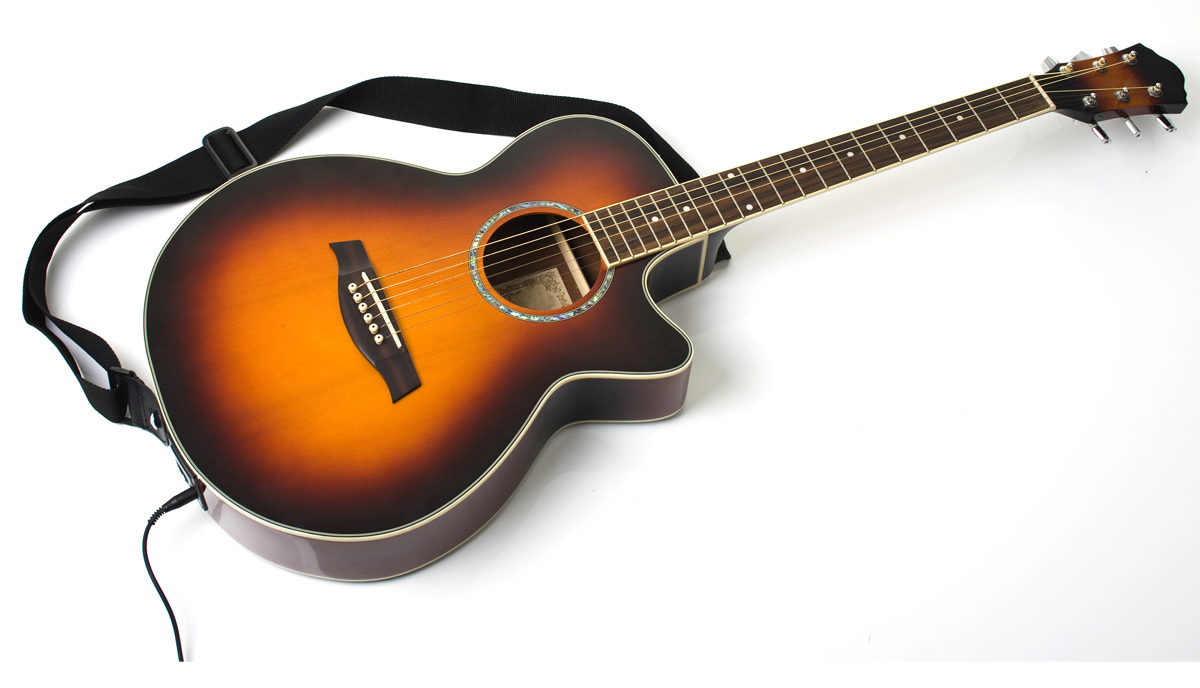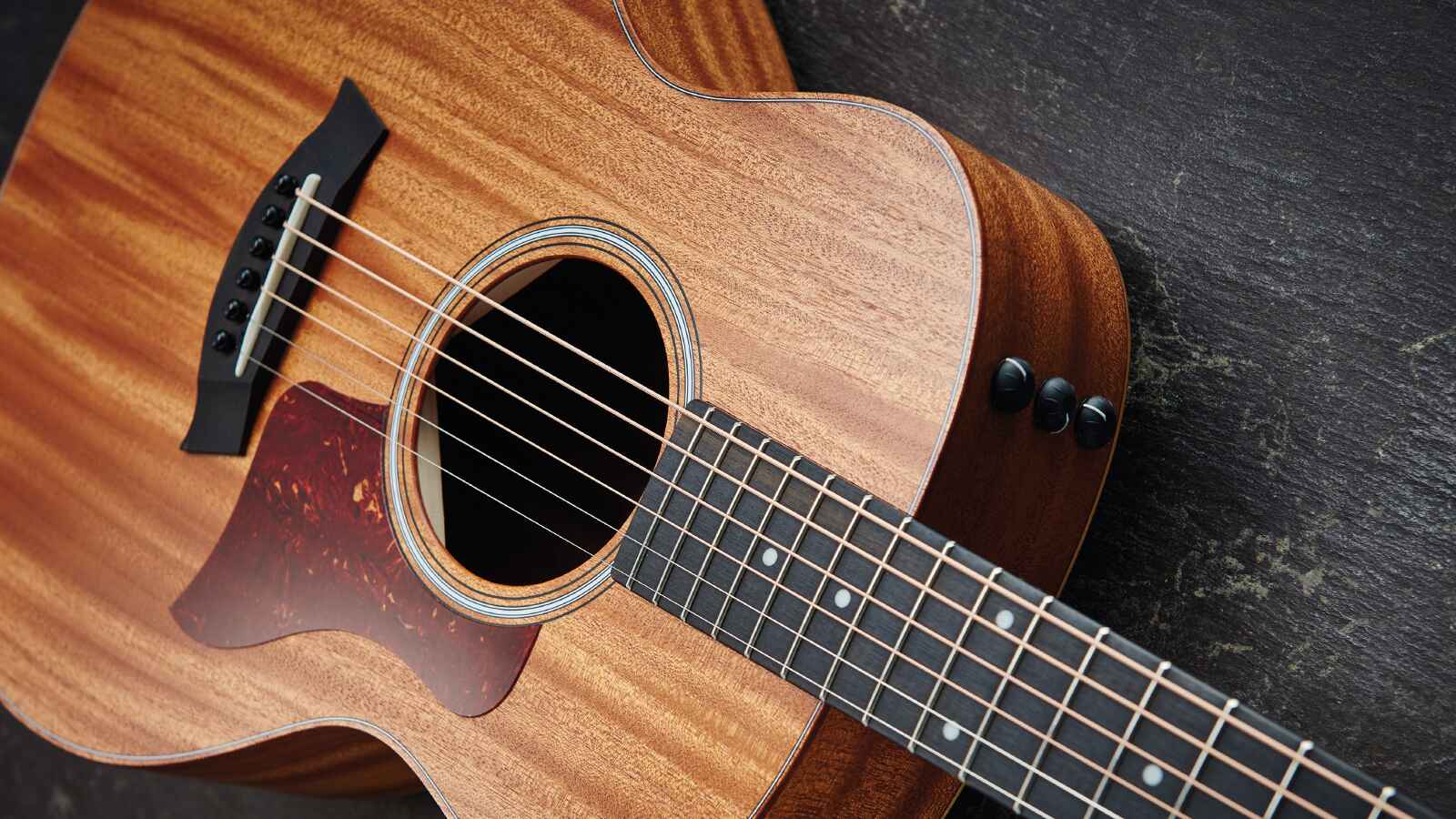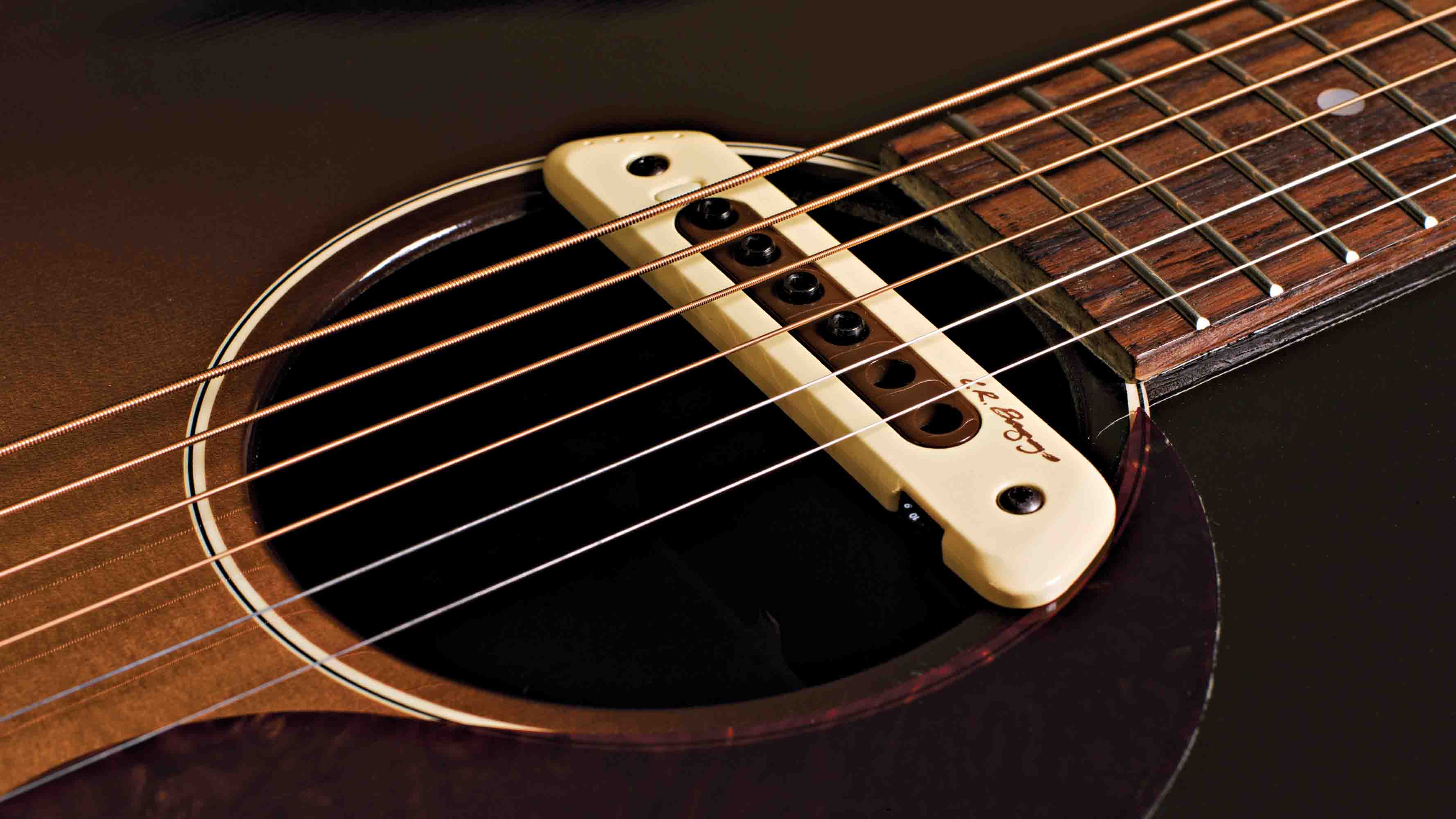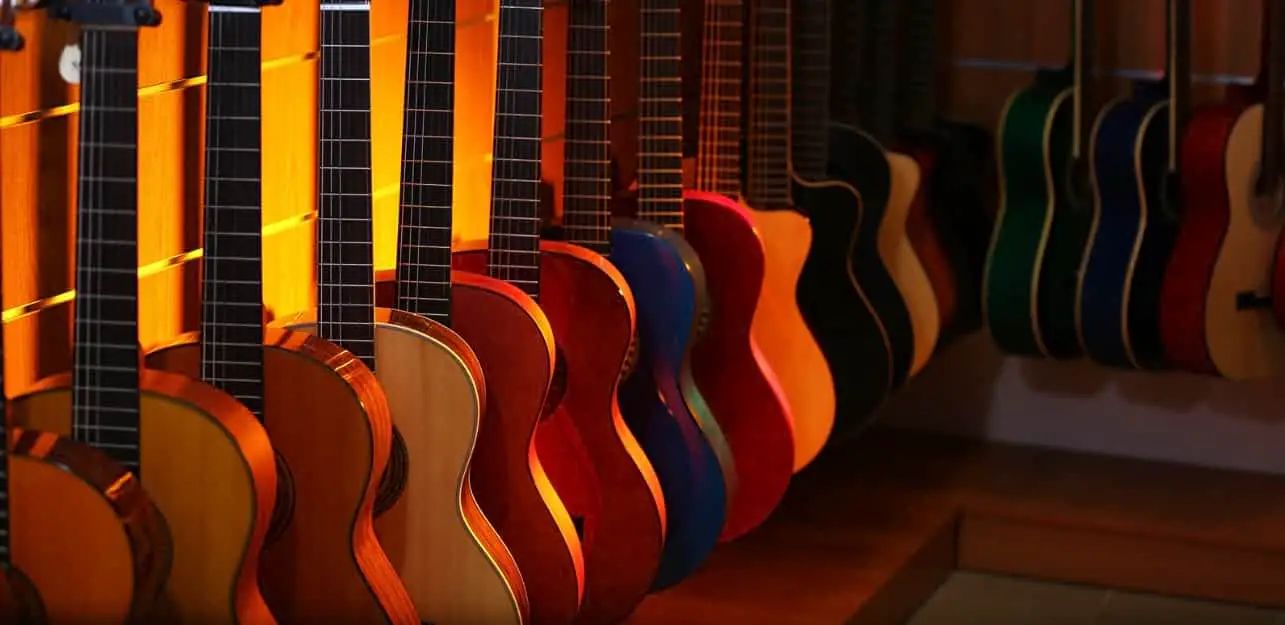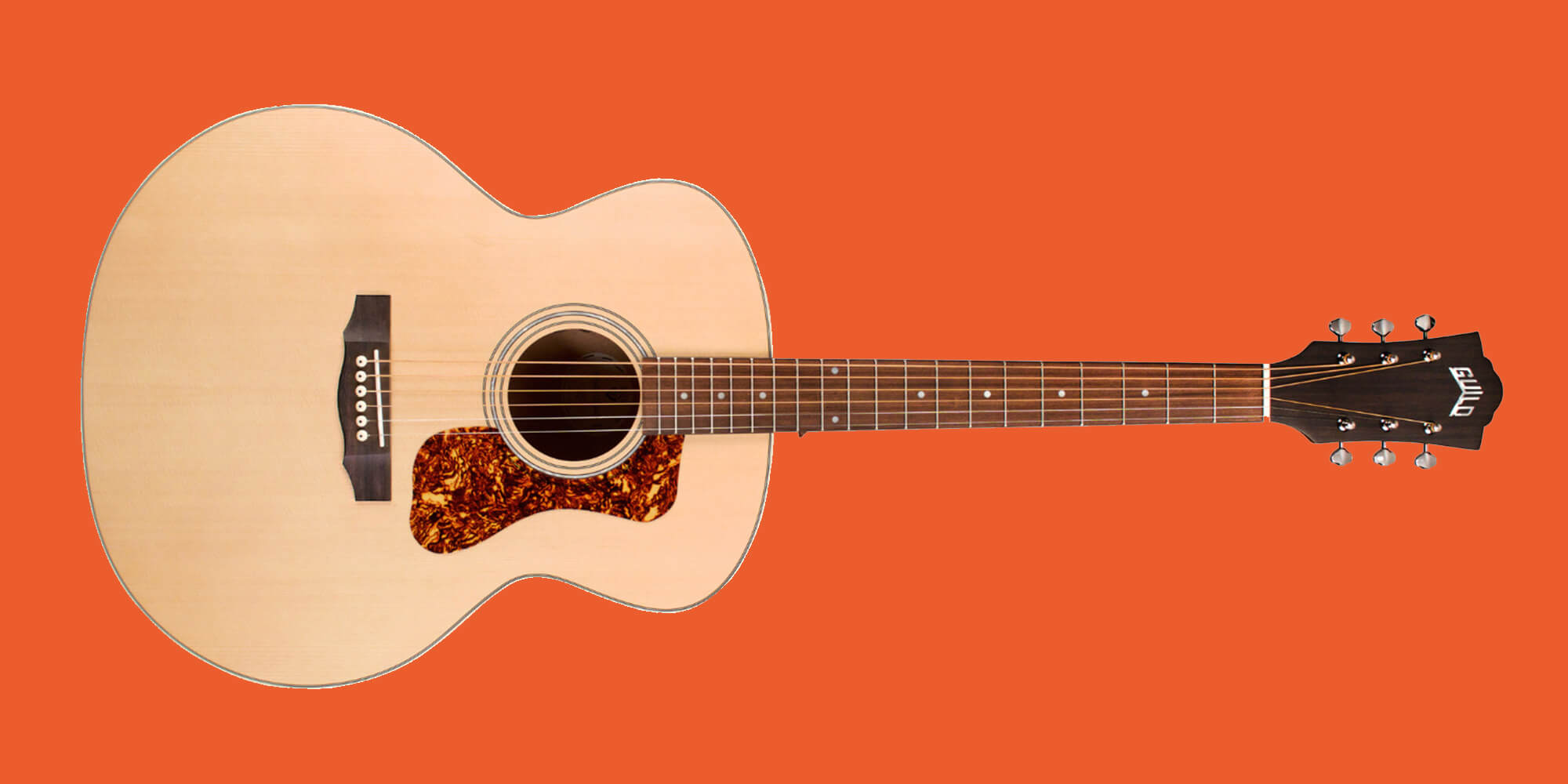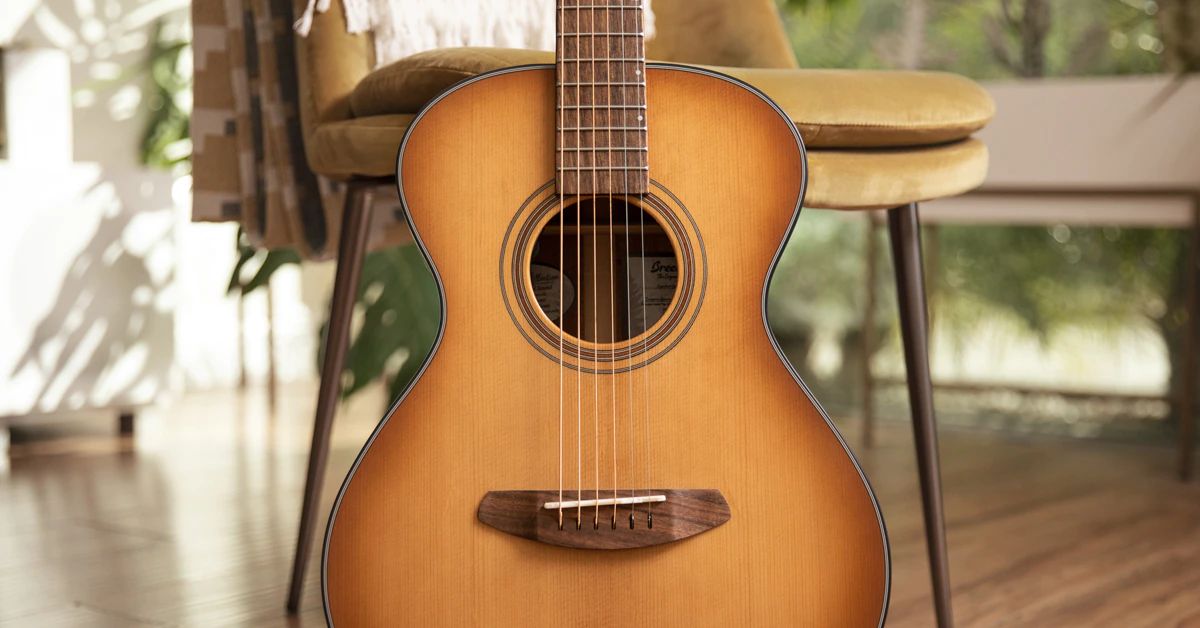The Origins of the Acoustic Guitar
The history of the acoustic guitar can be traced back thousands of years, with its origins deeply rooted in ancient civilizations. The journey of this magnificent instrument begins early in human history and has evolved over time to become one of the most popular musical instruments worldwide.
While the exact birthplace of the guitar is still a matter of debate, it is widely believed that early versions of this instrument date back to ancient Mesopotamia, around 2000 BC. These earliest guitars were simple stringed instruments, consisting of a soundboard and strings stretched across it.
As civilizations progressed, so did the design and construction of the guitar. By the 12th century, the guitar had gained popularity across Europe, particularly in Spain, where it took on its distinct shape and characteristics. This period saw the emergence of the classical guitar, with its signature curved body and six strings.
From there, the guitar continued to evolve and spread throughout the world. In the 19th century, luthiers in Spain and Italy introduced innovations such as the fan-bracing system, which enhanced the instrument’s resonance and projection. These advancements gave rise to the classical guitar as we know it today.
Meanwhile, in the Americas, guitars were making their mark as well. The acoustic guitar became a staple in folk, country, and blues music, particularly in the rural areas of the United States. The African diaspora also played a significant role in shaping the sound and style of acoustic guitar music, infusing it with rhythmic elements and unique playing techniques.
Over the years, the popularity of the acoustic guitar continued to grow, reaching new heights with the emergence of iconic musicians and the advent of recording technology. Artists such as Robert Johnson, Django Reinhardt, and Jimi Hendrix pushed the boundaries of the instrument, utilizing its versatility to create new and groundbreaking sounds.
Today, the acoustic guitar is a symbol of musical expression and creativity, beloved by amateurs and professionals alike. From intimate solo performances to lively jam sessions, the acoustic guitar has found its place in various genres and musical cultures across the globe. Its timeless sound, versatility, and portability have made it an enduring instrument that continues to captivate audiences.
Early Development of the Acoustic Guitar
The early development of the acoustic guitar involved a series of innovations and improvements that shaped the instrument into what it is today. From its humble beginnings as a simple stringed instrument, the guitar underwent significant transformations and gained popularity across different cultures.
During the Renaissance period, in the 16th century, the guitar experienced a surge in popularity across Europe. It was during this time that the guitar began to resemble its modern form, with a curved body and six strings. Changes in string composition, such as gut strings, improved the instrument’s tone and playability.
One of the key figures in the early development of the acoustic guitar was Antonio de Torres Jurado, a Spanish luthier. In the mid-19th century, Torres revolutionized guitar construction by introducing innovations such as the larger body size and the fan-bracing system. These advancements enhanced the guitar’s volume and projection, making it a more versatile and powerful instrument.
Simultaneously, in the United States, the acoustic guitar was gaining popularity among folk and country musicians. The guitar played a significant role in the development of American music genres, such as the blues and bluegrass. Artists like Robert Johnson and Doc Watson showcased the expressive potential of the instrument, utilizing techniques like fingerpicking and slide guitar playing.
As technology advanced, so did the construction and materials used in acoustic guitars. In the mid-20th century, guitar manufacturers began incorporating steel strings instead of gut strings, which not only increased the instrument’s volume but also gave it a brighter and more robust sound.
The early development of the acoustic guitar was not limited to Europe and North America. Different cultures around the world had their own variations and contributions to the instrument. In South America, the guitar played a prominent role in traditional folk music, with styles like the Argentinean Tango showcasing the instrument’s virtuosity.
In Asia, the acoustic guitar became popular in countries like Japan and India, where it was seamlessly blended with traditional musical elements. Musicians from these regions incorporated unique playing techniques and tunings, enriching the sonic palette of the acoustic guitar.
From its ancient roots to its modern-day incarnation, the acoustic guitar has continuously evolved and adapted to the changing musical landscape. The early developments in its construction and playing styles laid the foundation for the diverse range of music genres and playing techniques we have today.
Morphing into a Popular Musical Instrument
Throughout history, the acoustic guitar has transformed from a niche instrument into a beloved and widely popular musical instrument. Its evolution and adaptability have allowed it to thrive in various genres and musical cultures, capturing the hearts of musicians and audiences worldwide.
One significant factor in the guitar’s rise to popularity is its accessibility. Unlike many other instruments that require specialized training or a high level of technical proficiency, the acoustic guitar is relatively easy to learn and play. Its fretted neck and intuitive layout make it inviting for beginners, giving them the opportunity to quickly strum chords or pick out melodies.
As the guitar gained traction, it became a common fixture in community gatherings and social events. Its portable nature and ability to accompany singers made it an ideal instrument to bring people together and create music in a communal setting. This shared experience further contributed to the guitar’s popularity and its role as a social and cultural symbol.
The versatility of the acoustic guitar has also played a significant role in its widespread appeal. From rhythmic strumming and melodic fingerpicking to percussive techniques and harmonic accompaniment, the guitar offers a wide range of sounds and playing styles. This versatility allows musicians to adapt the instrument to different genres, from folk and country to rock, pop, and even jazz.
Another factor that contributed to the acoustic guitar’s popularity is its presence in popular music culture. Throughout the 20th century, various iconic musicians showcased the expressive and emotive qualities of the guitar, captivating audiences around the world. Artists like Bob Dylan, Joni Mitchell, and Eric Clapton demonstrated the guitar’s power as a storytelling instrument, pushing its boundaries and exploring new sonic possibilities.
Furthermore, advancements in recording technology played a pivotal role in the guitar’s widespread popularity. With the ability to capture and reproduce the instrument’s sound, recordings exposed the acoustic guitar to a broader audience. This, in turn, inspired aspiring musicians to pick up the instrument and create their own unique sounds.
Today, the acoustic guitar continues to thrive in both traditional and contemporary music scenes. Its versatility and resonant tones make it a versatile instrument in studio recordings, live performances, and intimate settings. Whether gracing the stages of grand concert halls or the cozy corners of coffeehouses, the acoustic guitar’s enduring popularity speaks to its universal appeal and timeless charm.
The Influence of Different Cultures on the Acoustic Guitar
The development and evolution of the acoustic guitar have been profoundly influenced by a diverse array of cultures from around the world. Each culture has contributed unique playing techniques, distinctive musical styles, and alternative designs, shaping the acoustic guitar into an instrument that represents the global heritage of music.
One culture that has had a significant impact on the acoustic guitar is Spanish culture. Spain is often considered the birthplace of the modern guitar, and its influence can be seen in the design and construction of the instrument. The Spanish introduced innovations such as the use of fan-bracing, which enhanced the guitar’s resonance and projection, resulting in the creation of the classical guitar.
African cultures have also played a crucial role in shaping the sound and style of the acoustic guitar. The influence of African music can be heard in genres such as blues and jazz. Techniques such as fingerpicking and syncopated rhythms were introduced by African-American musicians, contributing to the development of these musical genres and transforming the way the guitar is played.
In South America, countries like Argentina and Brazil have made significant contributions to acoustic guitar music. The Argentinean Tango, for example, showcases the expressive potential of the guitar, with intricate fingerpicking patterns and passionate melodies. Brazilian musicians have introduced unique playing techniques, such as the use of percussive slaps on the guitar body, adding rhythmic complexity and creating a distinct sound.
Asian cultures have also left their mark on the acoustic guitar. In Japan, the guitar found its place in traditional music genres, such as the shamisen-influenced fingerstyle playing known as “fingerpicking.” Indian music introduced alternative tunings that added depth and richness to the guitar’s sound, as well as intricate melodic patterns that challenged conventional Western musical norms.
Furthermore, the Indigenous cultures of the Americas have contributed to the acoustic guitar’s diverse repertoire. Native American musicians incorporated their unique musical traditions and storytelling techniques into their guitar playing, creating a fusion of traditional Indigenous styles and Western musical instruments.
The fusion of cultures through migration and globalization has also influenced the development of acoustic guitar music. Musicians from different cultural backgrounds have brought their traditions and styles to the instrument, creating new and exciting musical genres. The blending of flamenco guitar with Middle Eastern influenced melodies, for example, has given rise to a vibrant genre known as “Nuevo Flamenco.”
Through the influence of different cultures, the acoustic guitar has become a truly global instrument, transcending boundaries and creating bridges between people. The diverse musical traditions that have shaped the acoustic guitar continue to inspire musicians worldwide, showcasing the instrument’s ability to adapt and evolve while preserving its rich heritage.
The Evolution of Acoustic Guitar Design
The design of the acoustic guitar has evolved significantly over centuries, driven by technological advancements and the pursuit of better sound quality and playability. From its early primitive form to the sophisticated instruments we have today, the acoustic guitar’s journey showcases a rich history of innovation and experimentation.
Early iterations of the guitar, such as the ancient Mesopotamian and Egyptian instruments, were simple in construction. These early guitars featured a soundboard with strings stretched across it, producing basic tones. As civilizations progressed, more elaborate designs emerged, including instruments with curved backs and ornate decorations.
One pivotal development in the evolution of acoustic guitar design occurred during the Renaissance period in Europe. This era saw the adoption of the distinctive curved body shape and the addition of frets on the neck. These advancements helped improve the guitar’s playability and facilitated the execution of complex musical passages.
In the 19th century, the Spanish luthier Antonio de Torres Jurado revolutionized guitar construction with his innovations. Torres introduced a larger body size, a six-string configuration, and the fan-bracing system. These changes resulted in a significant improvement in volume, tonal quality, and projection, making the guitar a more versatile and powerful instrument.
Advancements in materials have also played a significant role in the evolution of acoustic guitar design. The use of different types of woods for the soundboard, back, sides, and neck can greatly impact the instrument’s tone and resonance. Traditional tonewoods such as spruce, cedar, and mahogany are still highly sought after for their tonal properties and aesthetic appeal.
In the mid-20th century, the rise of steel-string guitars brought about further innovations in design. Steel strings provided a brighter and more robust sound, prompting changes in bracing patterns to accommodate the increased tension. Manufacturers started using stronger and more durable materials for the top and neck to withstand the added stress.
Contemporary acoustic guitars continue to push the boundaries of design. Modern luthiers experiment with alternative materials, such as carbon fiber and various composites, to enhance the guitar’s durability, weight, and tonal characteristics. Cutaway body shapes and thinner neck profiles have become popular, allowing for easier access to higher frets and more comfortable playing sensations.
Additionally, advancements in electronics technology have led to the development of acoustic-electric guitars. These instruments incorporate pickups and preamp systems, allowing them to be amplified and easily integrated into live performances and studio recordings.
The evolution of acoustic guitar design is a testament to the ongoing pursuit of creating instruments that offer enhanced playability, versatility, and sonic quality. From the ancient stringed instruments to the cutting-edge designs of today, the acoustic guitar continues to evolve, remaining a beloved instrument cherished by musicians and audiences alike.
Famous Acoustic Guitarists and Their Impact
Famous acoustic guitarists have made an indelible mark on the world of music, influencing generations of musicians and reshaping the way the acoustic guitar is played and perceived. These talented musicians have not only showcased the instrument’s versatility but also pushed its boundaries, unlocking new realms of sonic possibilities.
One of the most iconic figures in acoustic guitar history is Robert Johnson. Considered a pioneer of Delta blues, Johnson’s intricate fingerpicking style and soulful vocals captivated audiences. His recordings in the 1930s laid the groundwork for future blues guitarists, and his influence can still be heard in the work of contemporary artists today.
In the realm of folk music, Bob Dylan stands as a towering figure. With his distinctive voice and poetic songwriting, Dylan combined intricate fingerpicking with powerful lyrics, stirring emotions and challenging societal norms. His songs, like “Blowin’ in the Wind” and “The Times They Are a-Changin’,” became anthems for social change during the 1960s and left a lasting impact on generations of musicians.
Another influential acoustic guitarist is Joni Mitchell. Known for her intricate open tunings and unique chord voicings, Mitchell’s music transcends traditional genres, blending folk, jazz, and pop elements. Her introspective songwriting and unconventional guitar approach have inspired countless artists and established her as one of the most innovative musicians of her time.
Eric Clapton has been at the forefront of both electric and acoustic guitar playing. Renowned for his soulful blues playing, Clapton’s acoustic guitar work on tracks like “Tears in Heaven” showcases his ability to evoke deep emotion and create timeless melodies. His influence extends beyond the blues genre, shaping the landscape of rock and creating a new standard for acoustic guitar-driven songs.
The fingerstyle playing of Tommy Emmanuel has earned him international acclaim and admiration. With his virtuosic technique and dynamic stage presence, Emmanuel has taken acoustic guitar playing to new heights. His intricate compositions and ability to seamlessly blend genres have inspired countless musicians to push the boundaries of what is possible with the instrument.
The impact of these and many other famous acoustic guitarists cannot be understated. Their innovative playing styles, unique approaches to songwriting, and ability to connect emotionally have shaped contemporary acoustic guitar music. They have inspired generations of musicians to pick up the instrument, explore its sonic possibilities, and forge their own paths in the world of music.
Today, the influence of these iconic musicians can be heard in the work of modern acoustic guitarists across various genres. Their impact continues to resonate, reminding us of the timeless beauty and expressive power of the acoustic guitar.
The Modern Acoustic Guitar Industry
The modern acoustic guitar industry has experienced remarkable growth and innovation, driven by advancements in technology, changing consumer demands, and a passion for craftsmanship. This thriving industry encompasses various aspects, from guitar manufacturing and distribution to the accessories market, shaping the landscape of the acoustic guitar world.
One of the key players in the modern acoustic guitar industry is the guitar manufacturing sector. Established companies and boutique luthiers craft instruments of exceptional quality, utilizing traditional techniques and incorporating cutting-edge advancements. These manufacturers produce acoustic guitars in a range of styles, catering to diverse musical genres and player preferences.
The industry has also witnessed the rise of guitar accessories and equipment companies. From high-quality strings, capos, and pickups to amplifiers and effects pedals, these companies supply the tools that help musicians enhance their acoustic guitar playing and sound. The accessory market has become an integral part of the acoustic guitar industry, providing countless options for customization and personalization.
The emergence of online marketplaces and e-commerce platforms has revolutionized the way acoustic guitars are bought, sold, and distributed. Online retailers make a vast range of acoustic guitars accessible to buyers worldwide, providing convenience, allowing comparison shopping, and facilitating direct interactions between manufacturers and customers.
In addition to traditional retail channels, the acoustic guitar industry has witnessed the growth of specialty guitar stores. These boutique establishments provide a unique shopping experience, offering expert advice, personalized customer service, and a curated selection of high-end acoustic guitars. These stores cater to enthusiasts and professional musicians seeking instruments of exceptional craftsmanship and tonal quality.
Alongside physical stores and online platforms, the industry has seen the rise of guitar communities and forums. Online platforms like forums, social media groups, and YouTube channels provide a space for guitar enthusiasts to share their knowledge, exchange ideas, and showcase their playing. These communities have played a substantial role in fostering a sense of camaraderie and creativity among guitarists of all skill levels.
Furthermore, the acoustic guitar industry is not limited to manufacturing and retail. It encompasses a wide range of interconnected professions, from skilled luthiers crafting instruments to music educators teaching aspiring guitarists. This dynamic ecosystem ensures the continued growth, innovation, and dissemination of knowledge within the acoustic guitar community.
The modern acoustic guitar industry thrives on the shared passion for the instrument, the dedication to craftsmanship, and the collaboration between manufacturers, retailers, and players. It is an industry fueled by creativity, ingenuity, and the love for music, ensuring the continuous evolution and vitality of acoustic guitars in the modern musical landscape.
The Popularity and Appeal of Acoustic Guitar Music
Acoustic guitar music has captured the hearts of audiences around the world, enjoying enduring popularity and a timeless appeal. From intimate solo performances to captivating ensemble arrangements, acoustic guitar music resonates with listeners of all ages and musical preferences.
One of the reasons for the widespread popularity of acoustic guitar music is its raw and organic sound. The warm tones and rich harmonics produced by the strings create a captivating and intimate sonic experience. The acoustic guitar’s ability to convey emotion and convey the nuances of the player’s touch adds an extra layer of depth and authenticity to the music.
The versatility of the acoustic guitar further contributes to its universal appeal. It can be found in almost every genre of music, from folk and country to rock, pop, jazz, and even classical. The instrument’s adaptability allows musicians to explore different styles and experiment with various techniques, ensuring its versatility and relevance across generations and musical cultures.
Acoustic guitar music often resonates with listeners on a deeply personal level. The stripped-down nature of the instrument puts the focus on the lyrics, melodies, and the emotional connection between the artist and the audience. The simplicity of the acoustic guitar allows the listener to connect with the music on a profound and intimate level.
Furthermore, acoustic guitar music has a universal accessibility that transcends language barriers. Its melodic nature and universal sound touch people from different cultural backgrounds, allowing the music to be enjoyed and appreciated by millions of people worldwide. Whether in a small intimate venue or on a grand concert stage, acoustic guitar music has the power to unite and uplift listeners.
Another factor contributing to the popularity of acoustic guitar music is its portability. Unlike other instruments that require a full ensemble or complex setup, the acoustic guitar can be taken anywhere, making it a reliable companion for musicians on the go. This ease of portability has played a significant role in the instrument’s presence in live performances, jam sessions, and impromptu music gatherings.
Moreover, the popularity of acoustic guitar music is fueled by the influence of famous guitarists and their iconic songs. Artists like James Taylor, Ed Sheeran, and John Mayer have captured mainstream attention with their soulful virtuosity and mesmerizing performances. Their ability to blend heartfelt lyrics with masterful guitar playing has helped introduce a new generation of listeners to the beauty of acoustic guitar music.
Whether it’s the captivating melodies, the emotional depth, or the intimate nature of the instrument, the popularity and appeal of acoustic guitar music continue to transcend time and resonate with listeners across the globe. Its universality, versatility, and timeless quality ensure that acoustic guitar music will continue to touch hearts and inspire generations to come.
Acoustic Guitar in Different Genres of Music
The acoustic guitar is a versatile instrument that has found its place in various genres of music, each contributing to its rich and diverse repertoire. From folk and country to rock, jazz, and beyond, the acoustic guitar adds a unique texture and character that enhances the musical experience.
In folk music, the acoustic guitar is a cornerstone instrument. Its warm and resonant tones create a backdrop for storytelling and lyrical expression. From traditional folk ballads to contemporary singer-songwriter styles, the acoustic guitar’s rhythmic strumming and delicate fingerpicking patterns set the foundation for intimate and heartfelt performances.
In country music, the acoustic guitar often takes on a more prominent role. It provides the signature strumming patterns and twangy leads that contribute to the genre’s distinct sound. From classic country to modern country-pop, the acoustic guitar is at the heart of many country hits, adding depth and authenticity to the songs.
Rock music has also embraced the acoustic guitar, showcasing its versatility and adding a different dimension to the genre. From ballads to unplugged performances, acoustic guitars bring a softer and more introspective flavor to rock music, balancing out the raw power of electric guitars. Acoustic-driven songs from legendary rock artists like Led Zeppelin, The Eagles, and Nirvana have become iconic parts of rock history.
Jazz music may not be the first genre that comes to mind when thinking about the acoustic guitar, but its presence is undeniable. Jazz guitarists like Django Reinhardt and Joe Pass have pushed the boundaries of the instrument, incorporating complex harmonies, intricate chord voicings, and improvisation into their playing. The acoustic guitar’s versatility allows it to emulate the sound and melodic qualities of jazz horns and pianos, making it an essential instrument in the genre.
Furthermore, the acoustic guitar has made its mark in genres such as blues, flamenco, world music, and even classical music. In blues music, the acoustic guitar is often used to accompany soulful vocals and deliver expressive slide and fingerpicking techniques. In flamenco, the guitar takes center stage, driving the energetic rhythms and providing the melodic framework for the passionate dance and vocals.
The acoustic guitar’s influence extends to various world music traditions as well. In genres like bossa nova, African highlife, and Indian classical music, the instrument adds a melodic and rhythmic foundation, blending seamlessly with other traditional instruments and enriching the sonic palette.
Classical music also showcases the acoustic guitar’s versatility and virtuosity. Acoustic guitar compositions by renowned classical guitarists like Francisco Tárrega, Andrés Segovia, and Manuel Ponce highlight the instrument’s ability to convey the intricacies of classical melodies and harmonies.
From its roots in folk music to its presence in rock, jazz, blues, and beyond, the acoustic guitar’s adaptability allows it to seamlessly fit into a multitude of genres. Its distinctive sound and expressive capabilities have made it an integral part of musical traditions around the world, continually evolving and inspiring musicians in endless ways.
Exploring Different Types of Acoustic Guitars
The world of acoustic guitars is incredibly diverse, with a wide range of styles and types to choose from. These different types of acoustic guitars not only offer varying tones and playing experiences but are also suited to different musical styles and preferences. Let’s explore some of the most popular types of acoustic guitars:
- Dreadnought: The dreadnought is one of the most common and iconic types of acoustic guitars. It features a large body size, a deep soundbox, and a wide waist. Dreadnoughts are known for their powerful and balanced sound, making them suitable for a range of musical genres from folk to rock.
- Parlor: Parlor guitars are smaller in size, with a more compact body shape. They offer a unique and vintage sound characterized by a warm tone and pronounced midrange. Parlor guitars are often favored by blues and fingerstyle players for their intimate and responsive qualities.
- Classical: Classical guitars, also known as Spanish guitars, are distinguished by their nylon strings, wide neck, and slotted headstock. They are designed specifically for classical music and fingerstyle playing. Classical guitars produce a rich, mellow, and balanced sound, perfect for solo performances and ensemble settings.
- Archtop: Archtop guitars have a distinctive arched top and back, providing a unique resonant sound favored by jazz and blues guitarists. These guitars often feature F-holes, similar to those found on violins, contributing to their characteristic tone and projection.
- Jumbo: Jumbo guitars possess a large rounded body shape, offering enhanced volume and bass response. They produce a robust, booming sound, making them ideal for players who crave a deep and powerful sound projection.
- 12-String: As the name suggests, 12-string guitars have double the strings of a standard acoustic guitar. They provide a rich, chorus-like sound with increased sustain and resonance. 12-string guitars are popular in folk and rock music, adding depth and complexity to the sound.
- Travel/Mini: Travel or mini guitars are designed for portability and convenience without compromising on playability. They have a compact size, making them perfect for musicians on the go or individuals with smaller hands. Despite their smaller size, these guitars can still deliver a surprisingly rich and balanced sound.
- Resonator: Resonator guitars feature a metal cone or multiple cones instead of a traditional soundboard, producing a distinctive metallic and resonant sound. Resonator guitars are often associated with blues and slide guitar playing, adding a unique and vintage flair to performances.
These are just a few examples of the many types of acoustic guitars available. Each type has its own unique qualities and characteristics, catering to different playing styles and musical preferences. Exploring and experimenting with different types of acoustic guitars can be an exciting journey, allowing musicians to discover new sounds and expand their sonic horizons.
Tips for Choosing and Caring for Your Acoustic Guitar
Choosing and caring for your acoustic guitar is essential to ensure its longevity, optimize its performance, and maintain its overall quality. Here are some valuable tips to consider:
Choosing Your Acoustic Guitar:
- Consider your playing style and preferred genre: Different acoustic guitar types and body shapes offer different tones and playability. Determine the style that suits your musical preferences and playing technique.
- Play multiple guitars before making a decision: Visit a reputable guitar store and try out various guitars within your budget. Pay attention to how they feel, sound, and resonate to find the best fit for you.
- Check the construction quality: Inspect the guitar to ensure it is well-built with no visible defects or imperfections. Look for solid wood tops, sturdy neck joints, and smooth fretwork.
- Consider your budget: Set a realistic budget range and focus on finding the best quality guitar within that range. Remember, a higher price doesn’t always guarantee a better instrument, so choose wisely.
- Seek recommendations and advice: Consult with experienced guitarists, teachers, or music store professionals who can provide guidance based on their expertise and knowledge.
Caring for Your Acoustic Guitar:
- Store your guitar properly: Keep your guitar in a stable environment with moderate temperature and humidity levels. Use a humidifier or dehumidifier based on your location to prevent the wood from drying out or swelling.
- Clean and wipe the guitar regularly: Use a soft cloth or microfiber cloth to remove dust, sweat, and oils from the guitar’s body, neck, and strings after each playing session.
- Change strings regularly: Strings can lose their brightness and start to sound dull over time. Replace them regularly to maintain the guitar’s optimal tone and playability.
- Protect the guitar from extreme temperatures and humidity: Avoid exposing your guitar to direct sunlight, extreme cold or heat, and rapid temperature changes, as these can cause warping, cracking, or damage to the instrument.
- Use a suitable case or gig bag for transportation: Invest in a quality case or gig bag to protect your guitar while traveling or when it’s not in use. This will safeguard it from accidental bumps, temperature changes, and other potential hazards.
- Get your guitar professionally set up: From time to time, consider taking your guitar to a luthier or guitar technician for a professional setup. They can adjust the action, intonation, and other factors to optimize playability and tone quality.
- Avoid exposure to excessive humidity or dryness: High humidity can cause the guitar’s wood to swell, while low humidity can lead to drying and cracking. Use a humidifier or dehumidifier to maintain an ideal humidity level.
By following these tips, you can ensure that your acoustic guitar remains in excellent condition, allowing you to enjoy its beautiful sound and longevity for years to come.







